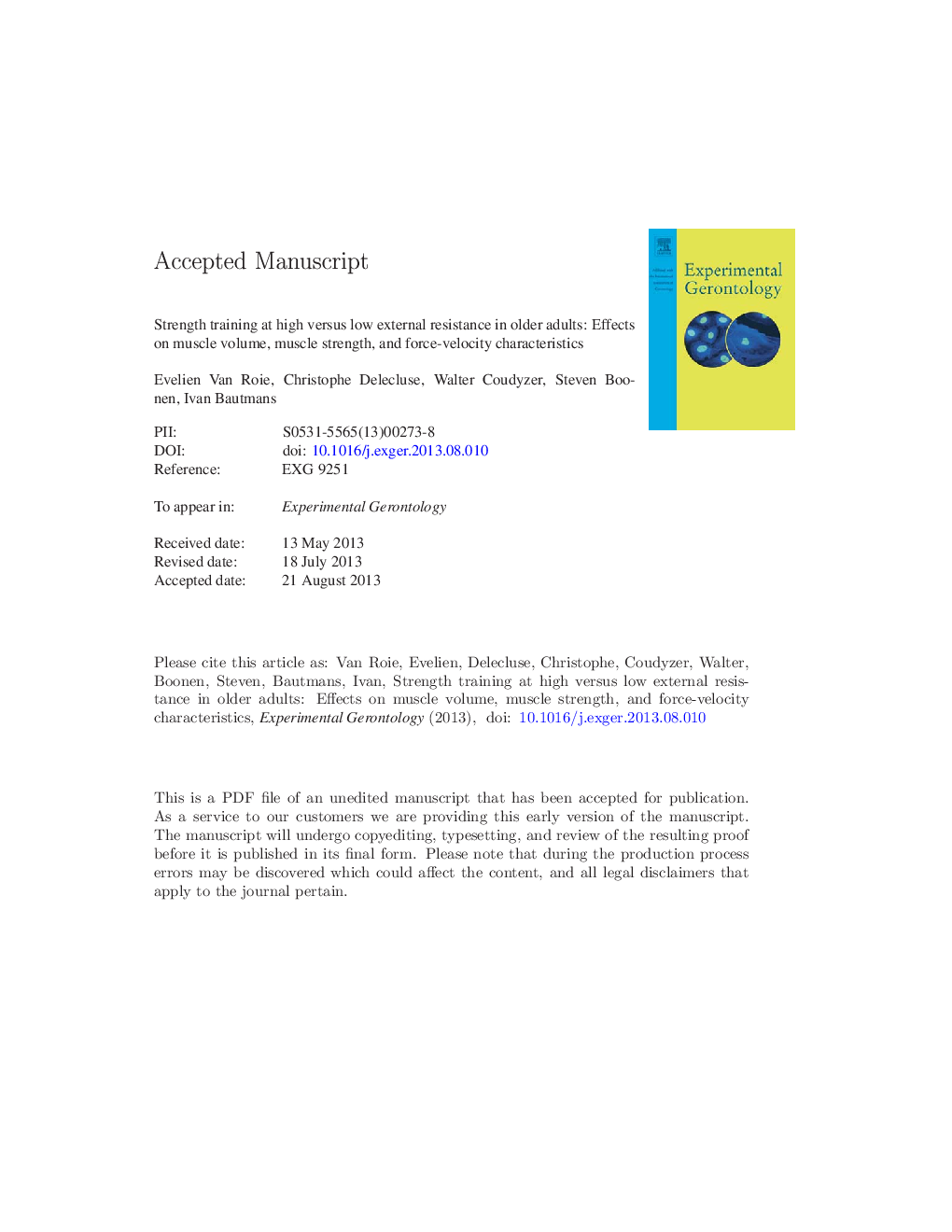| Article ID | Journal | Published Year | Pages | File Type |
|---|---|---|---|---|
| 10736828 | Experimental Gerontology | 2013 | 55 Pages |
Abstract
Muscle adaptations can be induced by high-resistance exercise. Despite being potentially more suitable for older adults, low-resistance exercise protocols have been less investigated. We compared the effects of high- and low-resistance training on muscle volume, muscle strength, and force-velocity characteristics. Fifty-six older adults were randomly assigned to 12 weeks of leg press and leg extension training at either HIGH (2 Ã 10-15 repetitions at 80% of one repetition maximum (1RM)), LOW (1 Ã 80-100 repetitions at 20% of 1RM), or LOW + (1 Ã 60 repetitions at 20% of 1RM, followed by 1 Ã 10-20 repetitions at 40% of 1RM). All protocols ended with muscle failure. Leg press and leg extension of 1RM were measured at baseline and post intervention and before the first training session in weeks 5 and 9. At baseline and post intervention, muscle volume (MV) was measured by CT-scan. A Biodex dynamometer evaluated knee extensor static peak torque in different knee angles (PTstat90°, PTstat120°, PTstat150°), dynamic peak torque at different speeds (PTdyn60°sâ 1, PTdyn180°sâ 1, PTdyn240°sâ 1), and speed of movement at 20% (S20), 40% (S40), and 60% (S60) of PTstat90°. HIGH and LOW + resulted in greater improvements in 1RM strength than LOW (p < 0.05). These differences were already apparent after week 5. Similar gains were found between groups in MV, PTstat, PTdyn60°sâ 1, and PTdyn180°sâ 1. No changes were reported in speed of movement. HIGH tended to improve PTdyn240°sâ 1 more than LOW or LOW + (p = 0.064). In conclusion, high- and low-resistance exercises ending with muscle failure may be similarly effective for hypertrophy. High-resistance training led to a higher increase in 1RM strength than low-resistance training (20% of 1RM), but this difference disappeared when using a mixed low-resistance protocol in which the resistance was intensified within a single exercise set (40% of 1RM). Our findings support the need for more research on low-resistance programs in older age, in particular long-term training studies and studies focusing on residual effects after training cessation.
Related Topics
Life Sciences
Biochemistry, Genetics and Molecular Biology
Ageing
Authors
Evelien Van Roie, Christophe Delecluse, Walter Coudyzer, Steven Boonen, Ivan Bautmans,
